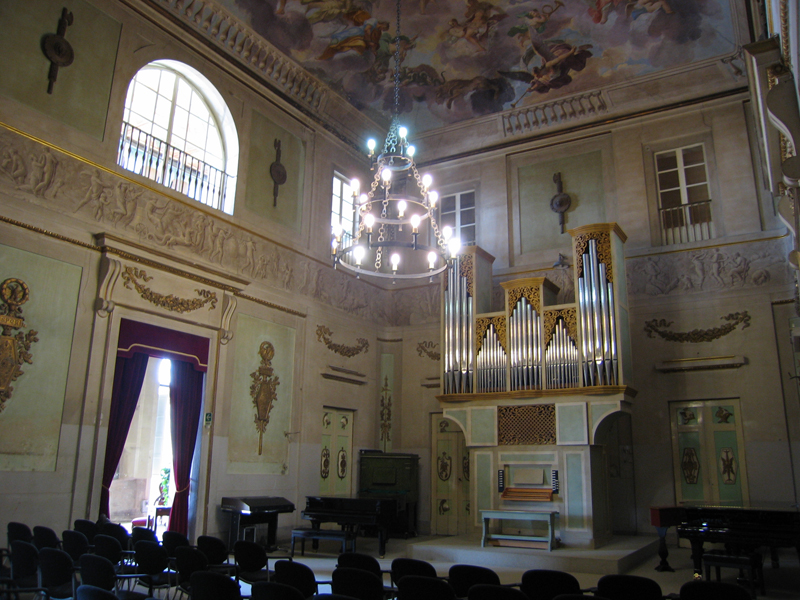HISTORICAL ORGANS

Pistoia... boasts a distiguished tradition in organ-making., which involved it in cultural exchanges with many countries in the world, mostly Japan.
 The Japanese Emperess is, in fact, very fond of this instrument: she has visited Pistoia, thanks to her rich artistic knowledge in the making of the organs.
The Japanese Emperess is, in fact, very fond of this instrument: she has visited Pistoia, thanks to her rich artistic knowledge in the making of the organs.At the Comunal Palace, Empress Michiko left everyone speechless with her performance of Gounod 's "Ave Maria".
The roots of Pistoia 's organ building tradition dates back to the works of many musicians from 1500 and 1600, originary from other Tuscan cities. However, it was in the second half of the '700 that this form of art took a turn for the great, thanks to the realisation of a magnificent organ with mechanical transmition barrels, in the church of S.Ignazio of Loyola, by the Flemish Jesuit Wilhelm Hermans, which will become a canon model in the upcoming centuries.
 Meanwhile, the Tronci and Agati families estabilish a local production. The Tronci brothers, Antonio and Filippo, were the leaders of a progeny of organ-makers which, through th acquisition of the Agati firm in 1883, achieved the monopoly in town.
Meanwhile, the Tronci and Agati families estabilish a local production. The Tronci brothers, Antonio and Filippo, were the leaders of a progeny of organ-makers which, through th acquisition of the Agati firm in 1883, achieved the monopoly in town.
This production, Pistoia 's jewel of the crown, was a source of sustainance to the citizens, as Giuseppe Vallardi said: "In Pistoia, quiality Organs are made and the steel manufactury serves to the sussistance of the low rank population".
The work of the Tronci brothers was well renown even outside of the regional boundaries. In the words of Don Umberto Pineschi, "the Tronci and the Agati built not just for Tuscany and Italy in general, but also for the Island of Corsica, the South-West of France, the Midle East and South America. Pistoian Organs ,for instance, were also installed at the Costanzi Theatre in Rome, Jerusalem 's Saint Sepulchre and at the Colon Theatre, in Buenos Aires. Although the first and the third ones went missing, the other one is still in its place, Jerusalem."
After a period of flexion in the production activity of Pistoia 's excellence, the rebirth of the historical organs in Pistoia began in the 70 's, following the trail of restorations across the region, the Italian Academy of Organ Music was founded, in 1975. Italy 's first in its genre, organists from all around the world applied to try the instruments that were at the time being recovered.
The Italian Foundation of Organ Music Academy promotes to this day this cultural music through initiatives, concerts, courses and publications.
The Academy is currently twinned with the city of Shirakawa (Gifu) in Japan, where every year an organ music interpretation course is held, which led to the visit of the japanese Emperess.

www.accademia-organo.it
www.originalitaly.it
bingwallpaper.anerg.com
Leave a comment





